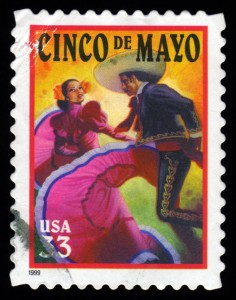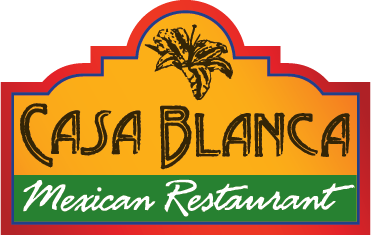Every year at the start of May there is excitement in the air.  May 5th, or Cinco de Mayo as we all know it, has become an American holiday in celebration of another country. That’s right, Cinco de Mayo was originally a holiday in Mexico, and it has evolved into something more in the United States. While most of us like to enjoy a touch of the Cinco de Mayo festivals, how many people actually know what the roots are for this holiday? The article below from history.com discusses the history of this Mexican holiday.
May 5th, or Cinco de Mayo as we all know it, has become an American holiday in celebration of another country. That’s right, Cinco de Mayo was originally a holiday in Mexico, and it has evolved into something more in the United States. While most of us like to enjoy a touch of the Cinco de Mayo festivals, how many people actually know what the roots are for this holiday? The article below from history.com discusses the history of this Mexican holiday.
Cinco de Mayo
Cinco de Mayo—or the fifth of May—commemorates the Mexican army’s 1862 victory over France at the Battle of Puebla during the Franco-Mexican War (1861-1867). A relatively minor holiday in Mexico, in the United States Cinco de Mayo has evolved into a celebration of Mexican culture and heritage, particularly in areas with large Mexican-American populations. Cinco de Mayo traditions include parades, mariachi music performances and street festivals in cities and towns across Mexico and the United States.
History of Cinco de Mayo: Battle of Puebla
In 1861 the liberal Mexican Benito Juárez (1806-1872) became president of a country in financial ruin, and he was forced to default on his debts to European governments. In response, France, Britain and Spain sent naval forces to Veracruz to demand reimbursement. Britain and Spain negotiated with Mexico and withdrew, but France, ruled by Napoleon III (1808-1873), decided to use the opportunity to carve a dependent empire out of Mexican territory. Late in 1861, a well-armed French fleet stormed Veracruz, landing a large French force and driving President Juárez and his government into retreat.
Certain that success would come swiftly, 6,000 French troops under General Charles Latrille de Lorencez (1814-1892) set out to attack Puebla de Los Angeles, a small town in east-central Mexico. From his new headquarters in the north, Juárez rounded up a rag-tag force of 2,000 loyal men—many of them either indigenous Mexicans or of mixed ancestry—and sent them to Puebla. Led by Texas-born General Ignacio Zaragoza (1829-1862), the vastly outnumbered and poorly supplied Mexicans fortified the town and prepared for the French assault. On May 5, 1862, Lorencez drew his army, well provisioned and supported by heavy artillery, before the city of Puebla and led an assault from the north. The battle lasted from daybreak to early evening, and when the French finally retreated they had lost nearly 500 soldiers. Fewer than 100 Mexicans had been killed in the clash.
Although not a major strategic win in the overall war against the French, Zaragoza’s success at Puebla represented a great symbolic victory for the Mexican government and bolstered the resistance movement. Six years later—thanks in part to military support and political pressure from the United States, which was finally in a position to aid its besieged neighbor after the end of the Civil War—France withdrew. The same year, Austrian Archduke Ferdinand Maximilian, who had been installed as emperor of Mexico by Napoleon in 1864, was captured and executed by Juárez’s forces. Puebla de Los Angeles was renamed for General Zaragoza, who died of typhoid fever months after his historic triumph there.
Cinco de Mayo in Mexico
Within Mexico, Cinco de Mayo is primarily observed in the state of Puebla, where Zaragoza’s unlikely triumph occurred, although other parts of the country also take part in the celebration. Traditions include military parades, recreations of the Battle of Puebla and other festive events. For many Mexicans, however, May 5 is a day like any other: It is not a federal holiday, so offices, banks and stores remain open.
Cinco de Mayo in the United States
In the United States, Cinco de Mayo is widely interpreted as a celebration of Mexican culture and heritage, particularly in areas with substantial Mexican-American populations. Chicano activists raised awareness of the holiday in the 1960s, in part because they identified with the victory of indigenous Mexicans over European invaders during the Battle of Puebla. Today, revelers mark the occasion with parades, parties, mariachi music, Mexican folk dancing and traditional foods such as tacos and mole poblano. Some of the largest festivals are held in Los Angeles, Chicago and Houston.
Confusion with Mexican Independence Day
Many people outside Mexico mistakenly believe that Cinco de Mayo is a celebration of Mexican independence, which was declared more than 50 years before the Battle of Puebla. That event is commemorated on September 16, the anniversary of the revolutionary priest Miguel Hidalgo y Costilla’s famous “Grito de Dolores” (“Cry of Dolores”), a call to arms that amounted to a declaration of war against the Spanish colonial government in 1810.
Cinco de Mayo has had an American makeover thanks to the Mexican American communities. The once celebration of a winning battle has transformed into an American holiday to celebrate the Mexican culture. Cinco de Mayo is one of those holidays that everyone looks forward to and everyone takes part in to celebrate one of the many cultures that makes our country great.
Cinco de Mayo is similar to St. Patrick’s Day, or the 4th of July in the sense that the holiday celebrates various cultures. Cinco de Mayo celebrates Mexican culture, St. Patrick’s Day celebrates Irish culture, and the 4th of July celebrates our American culture.
It is customary on Cinco de Mayo to celebrate the Mexican culture, often with Mexican drinks. Please join us at any of our 3 Casa Blanca locations in Massachusetts on Cinco de Mayo or on any other day as we celebrate our roots as a Mexican restaurant.

